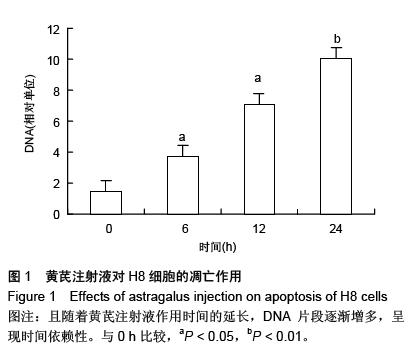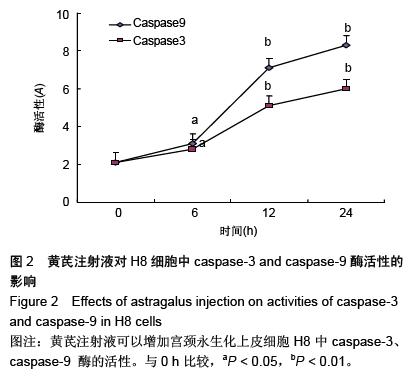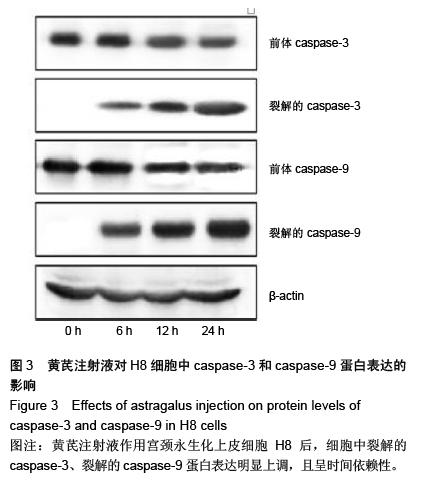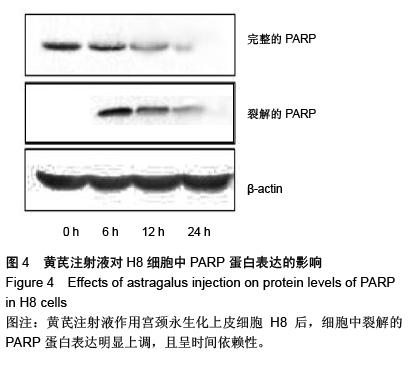中国组织工程研究 ›› 2016, Vol. 20 ›› Issue (5): 743-747.doi: 10.3969/j.issn.2095-4344.2016.05.023
• 细胞损伤与修复动物模型 Animal models of cell injury and repair • 上一篇 下一篇
黄芪注射液干预人宫颈永生化上皮细胞体外实验模型的细胞凋亡变化
吕 玲1,肖晨光2,刘 青1,张 立3,李能莲3,舍雅莉3
- 1甘肃省妇幼保健院,甘肃省兰州市 730050;2中核兰州铀浓缩有限公司职工医院,甘肃省兰州市 730065;3甘肃中医学院,甘肃省兰州市 730000
Effects of astragalus injection on human immortalized cervical epithelial cell apoptosis in vitro
Lv Ling1, Xiao Chen-guang2, Liu Qing1, Zhang Li3, Li Neng-lian3, She Ya-li3
- 1Maternal and Child Health of Gansu Province, Lanzhou 730050, Gansu Province, China; 2Lanzhou Uranium Worker Hospital of China National Nuclear Corporation, Lanzhou 730065, Gansu Province, China; 3Traditional Chinese Medical College of Gansu, Lanzhou 730000, Gansu Province, China
摘要:
文章快速阅读:
.jpg)
文题释义:
黄芪:又名绵芪。多年生草本,高50-100 cm。主根肥厚,木质,常分枝,灰白色。茎直立,上部多分枝,有细棱,被白色柔毛。多年生草本,高50-100 cm。产于内蒙古、山西、甘肃、黑龙江等地。
结果与结论:①ELISA 法检测,20 g/L黄芪注射液分别作用0,6,12,24 h后,人宫颈永生化上皮细胞H8 DNA 片段随着药物作用时间的延长逐渐增多,且呈时间依赖性(P < 0.05)。②酶标仪检测,20 g/L黄芪注射液作用0,6,12,24 h后,人宫颈永生化上皮细胞H8 caspase-3和caspase -9 的活性增高,且呈时间依赖性(P < 0.05)。③20 g/L黄芪注射液分别作用0,6,12和24 h后,人宫颈永生化上皮细胞H8中cleaved caspase-3、cleaved caspase-9表达逐渐升高,差异有显著性意义(P < 0.05);Cleaved PARP蛋白的表达逐渐下降,差异有显著性意义(P < 0.05)。结果说明,黄芪注射液对人宫颈永生化上皮细胞H8具有较显著的诱导凋亡作用,其机制可能与上调caspase-3和caspase-9蛋白表达有关。



